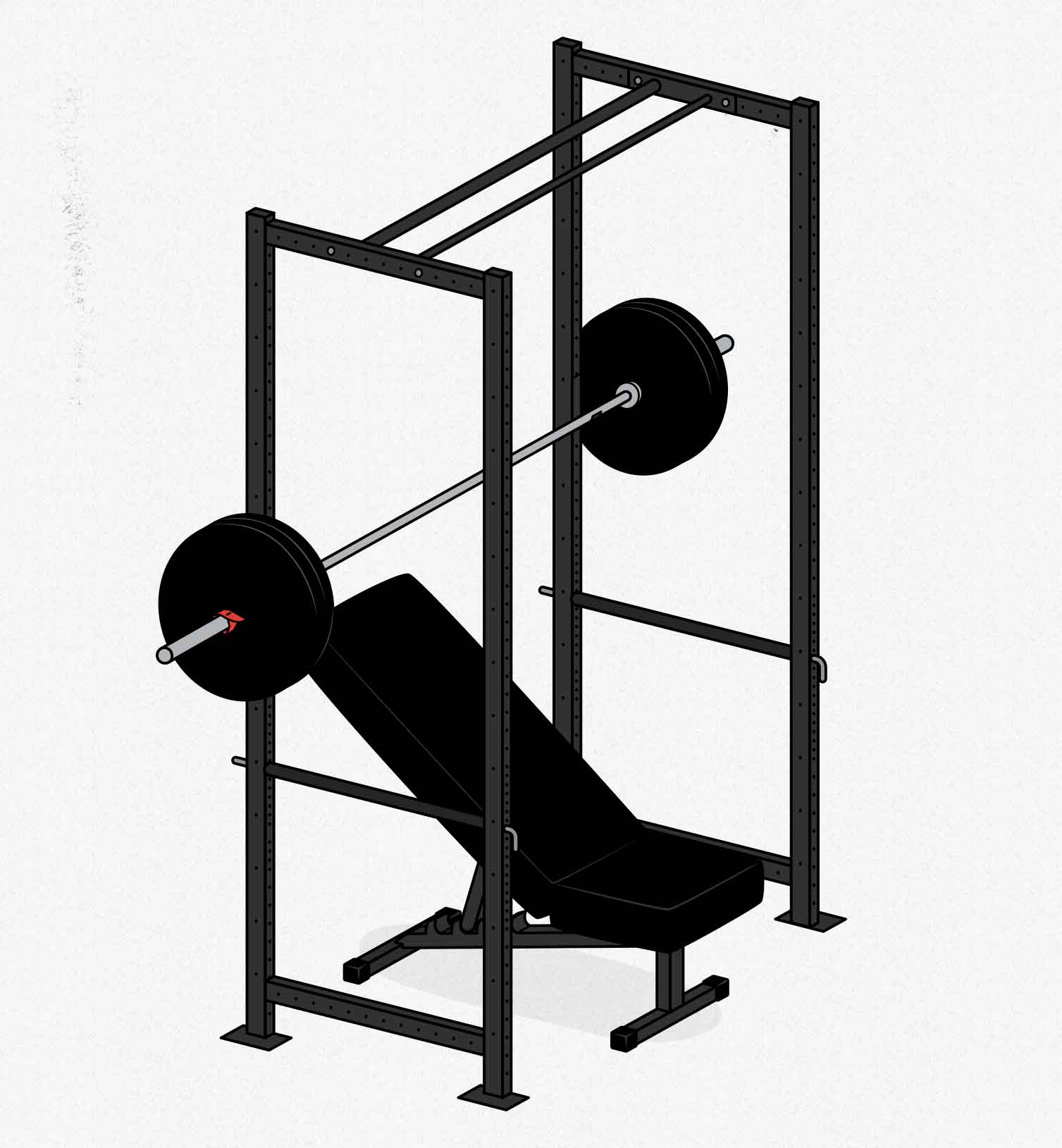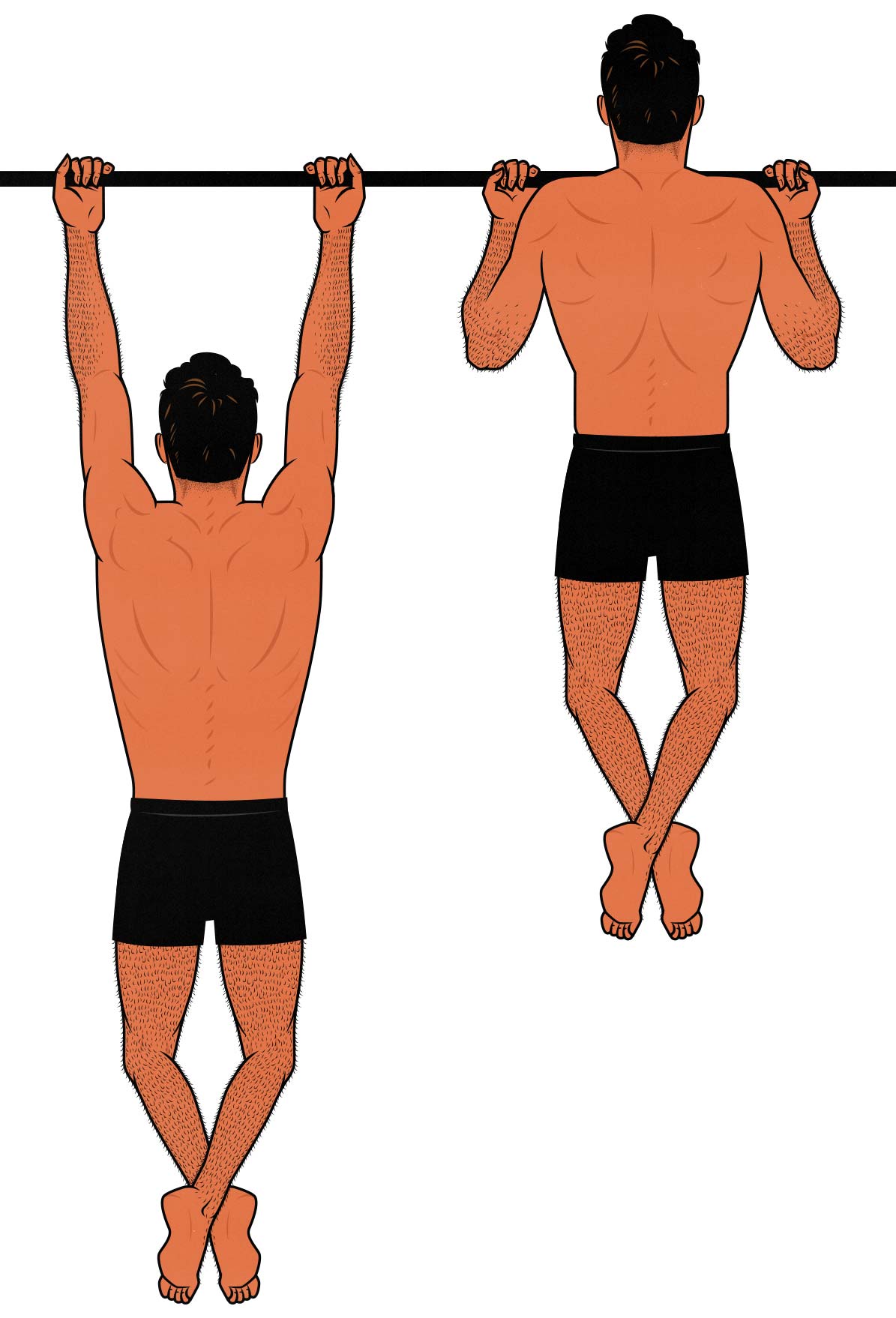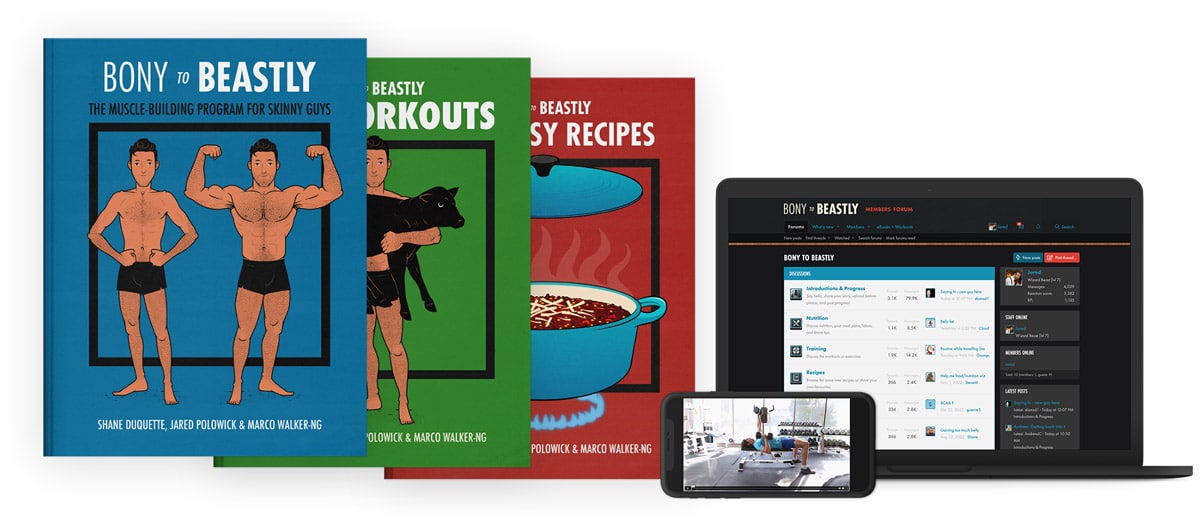
Should You Build A Dumbbell or Barbell Home Gym?
Let’s say you want to build muscle at home. You’ve got a few different options. You could use your body weight, but bodyweight workouts are painful and difficult. So maybe you decide to get some resistance bands, but they aren’t very good for building muscle. Exercise machines are good for building muscle, but you’d need a different machine for each lift, which is highly impractical. That’s why most people turn to weights: barbells and dumbbells.
Both barbells and dumbbells are great at stimulating muscle growth, both are reasonably affordable, and both can be used to do hundreds of different exercises, allowing you to follow a full hypertrophy training program. Still, barbells and dumbbells aren’t quite the same as one another.
Strength training is known for favouring barbells, bodybuilding is known for favouring dumbbells (and exercise machines). For building muscle, we want to use both strength training and bodybuilding lifts. We want to use aspects of both styles of training. So which should you choose? Barbells or dumbbells?
Let’s go over the pros and cons.

The Different Types of Home Gyms
If you want to build muscle at home, there are a few different types of home gyms you can build:
- The barbell home gym: ideal for people with a spare room and the budget to set it up. This competes in every way with a commercial gym and is in some ways quite a bit better. You’d need to get a power rack, a barbell, weight plates, collars, a floor mat, and so on. These gyms tend to cost $1,000–3,000.
- The dumbbell home gym: ideal for people who don’t have room for a full barbell gym. All you need are some adjustable dumbbells. For a fully ideal setup, add an adjustable bench and a chin-up bar. This can run you $500–2,000.
- The kettlebell home gym: not fully ideal, and you’d need to heavily adjust most hypertrophy programs, but you can still build muscle quite well. These only cost $100–300.
- The resistance-band home gym: not great for building muscle, and the workouts are more difficult and less inefficient. We don’t usually recommend trying to build muscle with resistance bands. But they’re cheap, convenient, and portable. And some people like them very much.
- The exercise machine home gym: these range from hammer strength machines to cable stack machines. Exercise machines are similarly effective to free weights, but for the money you pay, you don’t get much versatility. Ideally, you’d build a dumbbell or barbell home gym instead.
- The bodyweight home gym: is great for building muscle, especially in your upper body. But bodyweight bulking workouts are very difficult and painful, and it’s hard to train some muscle groups. Most people greatly prefer lifting weights. On the other hand, bodyweight home gyms can be very cheap. All you need is a chin-up bar or gymnastic rings.

The Advantages of a Barbell Home Gym
Barbells are incredibly popular in strength training circles, and with good reason. They’re amazing for gaining muscle size and strength. Here’s why:
- You can do the four big barbell lifts. The squat, bench press, deadlift, and overhead press are four of the best lifts for gaining muscle size and strength. Chin-ups and push-ups are similarly great, but you can do those in your barbell home gym, too.
- The barbell lifts are stable, meaning that we can focus more on challenging our muscles, less on challenging our balance. This also makes the lifts feel easier. This is a big part of why most people find barbell training the most enjoyable.
- Barbell lifts are heavier. Most people can lift more total weight when using barbells. For instance, they might do barbell front squats with 315 pounds and dumbbell goblet squats with 100 pounds. The stimulation we get in our quads is very similar, since both lifts brings our quads through a similar range of motion and can be brought withni a rep or two of failure. But the stimulation we get in our stabilizer muscles is very different. Our backs needs to support much more weight when doing barbell front squats. This is why barbell lifts often build more overall muscle mass with every exercise.
- Barbells are ideal for strength training. Barbell home gyms are designed to be safe for powerlifting. We can unrack the weight from the perfect height, and safety bars will catch the barbell if we drop it. This is essential when doing max-effort squatting and bench pressing. Plus, barbells can be loaded with as much as 1000 pounds, meaning you’ll never grow too strong for them.
- Barbells are great for progressive overload. You can go up in small increments of 5 pounds every week, making it simple to gradually lift heavier. With micro plates, you can go up in even smaller increments. Dumbbells are great for this, too, but we’re normally stuck going up by 5 pounds per dumbbell.
- Barbells are incredibly efficient. Not only do they more load on our torsos than dumbbell training, but they also tend to engage more muscle mass to move the weight. For instance, when doing a barbell bench press, our triceps are heavily involved. When doing a dumbbell bench press, they aren’t. (If we engaged our triceps during the dumbbell bench pres, the dumbbells would fly off to the sides.)
- You can train both sides at once. With dumbbell training, you’ll often find yourself doing one-legged and one-armed lifts. With barbells, you can train both sides simultaneously. This makes barbell workouts faster and more efficient (and less painful).

The Advantages of a Dumbbell Home Gym
Dumbbells are incredibly popular in bodybuilding circles, and they have some great advantages for building a strong and aesthetic physique. Here’s why:
- Dumbbell lifts are great for isolating your muscles. For instance, dumbbell incline curls are often better than barbell curls. You’re more likey to be limited by the strength of your biceps, they’re easier on your joints, and they work your biceps at longer muscle lengths (which is amazing for building muscle). You also get access to the dumbbell chest fly, reverse fly, and lateral raise.
- Dumbbell lifts are lighter and lower stress. When you do dumbbell lifts, they aren’t quite as heavy, tiring, or hard on your joints as barbell lifts. Part of this is because less weight is being lifted. Part of this is because dumbbells allow for a free movement in your joints. This makes dumbbells great for people with injured or cranky joints.
- Dumbbell gyms are compact. Even if you live in a small bachelor apartment, no problem. Toss your dumbbells into your closet. They barely take up more room than a pair of shoes.
- Dumbbells are incredibly versatile. Every single barbell lift has a dumbbell variation, and often more than one. Plus, you get access to lifts that can only be done with dumbbells. This makes dumbbells great for following any program, including ones designed for commercial gyms.

Summary
Barbell training is generally the simplest, easiest, and most efficient way to build muscle. This is why barbell home gyms are often the best default option, provided you have a spare room and enough money to build one. Here’s how to build a barbell home gym.
Dumbbell training is slightly less efficient than barbell training, but it gives you a ton of freedom with your isolation lifts and is great for building a bigger upper body. If you don’t have room for a barbell home gym, a dumbbell home gym will serve you very well. Here’s how to build a dumbbell home gym.

If you want more muscle-building information, we have a free bulking newsletter for skinny guys. If you want a full bulking program, including a 5-month workout routine, diet guide, recipe book, and online coaching, check out our Bony to Beastly Bulking Program. You can do the entire thing with a barbell or dumbbell home gym.

